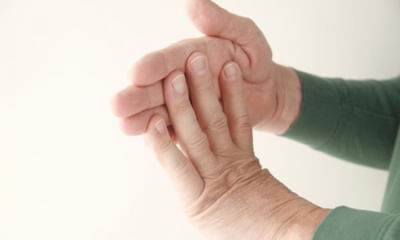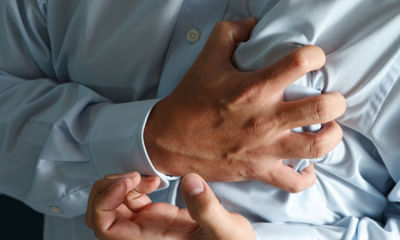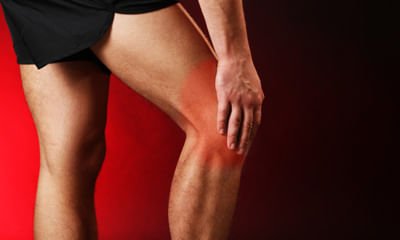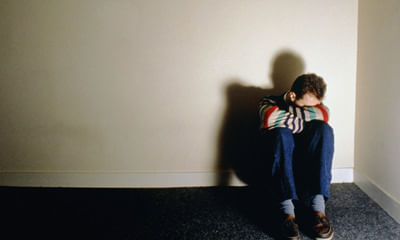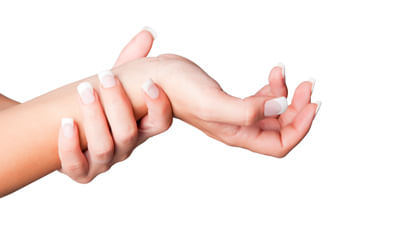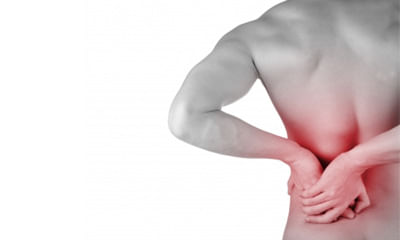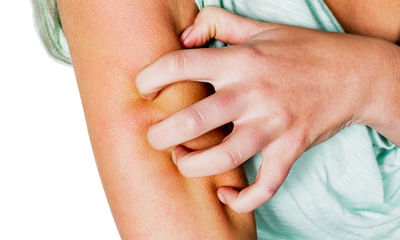Tingling Feeling In Chest And Arms
I got pain in neck (near ear) and head after lifting weights on my shoulder in gym. I think I got pinched nerve. Plzz he ...
Ask Free Question
may b u suffer from paraspinal spasm and cervicogenic problem. take rest. if u hv no any ear infection thn go for x ray of cv spine. apply hot pack n anlgesic gel. use cv collar. counslt online rre530.
I get random chest pain (mostly left side) and shortness of breath (like shaking and feeling like I can not breath) and ...
Ask Free Question
Dear lybrate-user ,marijuana effect won't last for these long years. You need not worry as your symptoms are atypical and specially unrelated to activities. Still if you to clear your mind then go for tmt. My advice would be to join art of living or yoga class or meditation class.
Hello, I am an 18 year old african american male. I am a track and field athlete and up until recently I have been a dom ...
Ask Free Question
Hi lybrate-user. Firstly relax and don't panic! you had suffered from acute kidney disease and muscle injury that can be a reason your creatinine kinase increased levels. As far as your decreasing stamina and body complaints are concerned I suggest you to rejuvenate your body via ayurveda. What I mean by that is you may think that you jv recovered from previous injuries but your body needs more care. We can plan rejuvenating therapy some personalized tips * do not go for protein supplements as already your kidney has suffered in past * take proper antioxidants in your diet daily * give your cells more oxygen to recover and for mental relaxation. Do some meditation and breathing exercises. Trust me it will help you long way.
I am getting pin needle sensation in my hand arms palm legs n toes. I do have chest pain as well but cardiologists did a ...
Ask Free Question
The pins and needles feeling can be caused by a sitting or sleeping position and is nothing to worry about. However, if the tingling hands or feet come with other symptoms, like numbness, itching, pain or muscle wasting it can be a sign of nerve damage. This can be the result of diseases such as diabetes, a bacterial or viral infection, toxic exposure or an injury. Have you got the diabetes and vitamin deficiencies tests done? Diabetes and B12 deficiency is the most common causes of peripheral neuropathy. Alcohol consumption is also one of the reasons. See your doctor, to find the underlying cause and try to address it at the earliest. Till the time you diagnose the cause. You can try one of these simple tips: Usually, tingling sensation and numbness are caused by sitting in the same position for long stretches of time. The best treatment for this is trying some basic stretches or exercising a little to improve blood circulation. Continuous activity can also trigger tingling in the feet and arms. So, the best way to treat such cases is to lie down and take a nice rest. One of the best ways to ease tingling sensation and numbness is regularly practicing yoga. Yoga helps calm the body and mind, and at the same time also helps enhance and stimulate healthy blood circulation. Take vitamin B-complex medicine .This is one of the best home remedies for episodic or chronic tingling or numbness. Include magnesium rich foods in your diet. Magnesium is an essential mineral that not only solves problems, but also helps the nervous and cardiovascular system function optimally.
I had a viral infection about 6 weeks ago. Ever since I have been experiencing some strange symptoms. Listed below Stran ...
Ask Free Question
Many a times after viral chest infections the complains you are mentionin may persist for 6-8 weeks, this we call post viral syndrome. Take care of yourself, do not get exposed to a person who is harbouring a viral infection, take healthy balanced diet including fresh fruits, do mild exercises, if the problem still persists do consult a physican in person.
Is it normal when you have chronic anxiety disorder chest pain body weakness and legs and arms weak tingling and numb. C ...
Ask Free Question
Dear Lybrate user, Anxiety disorders are a category of mental disorders characterized by feelings of anxiety and fear, where anxiety is a worry about future events and fear is a reaction to current events. These feelings may cause physical symptoms, such as a racing heart and shakiness. There are a number of anxiety disorders: including generalized anxiety disorder, a specific phobia, social anxiety disorder, separation anxiety disorder, agoraphobia, and panic disorder among others. While each has its own characteristics and symptoms, they all include symptoms of anxiety. I need to know more about your anxiety so that I will be able to diagnose it properly and provide you tips to overcome and manage your anxiety. Take care.
I am 50 years old left hand fingers are feeling numb from 6 to 7 hours what should I do? ...
Ask Free Question
Pressure upon the arm nerves or vessels causing numbness, tingling or temporary paralysis of the arm may result from: Sleeping with the hand under the head Sitting with the arm hanging over the back of a chair Wearing straps or carrying a bag or rucksack Inflated cuff during measuring blood pressure Raising the Arms Above the Level of the Heart Keeping the hand (s) above the level of the heart during work or sleep can prevent appropriate blood perfusion of the hands, and cause numbness, tingling or partial paralysis of the hand (s) within few minutes. Cold In cold weather, narrowing of the arteries in the hands and fingers can prevent appropriate blood supply and thus numbness, tingling, pain or temporary paralysis of the hands and fingers. DISORDERS OF THE NECK (CERVICAL) SPINE Cervical Disk Syndrome Degenerative disc disease (DDD) or injury, like hyper-extension injury in car accidents (head moves rapidly toward the back), can result in bulging or herniated disc (s) pressing upon the cervical (neck) spinal nerves, thus causing symptoms of cervical disc syndrome: Position/movement dependent pain, tingling or numbness in the neck, shoulders, upper back, arm, hand or fingers (when the roots of cervical spinal nerves are compressed) Stumbling gait, difficulty with fine hand moves, tingling in the body or legs (when the cervical spinal cord is compressed) Symptoms can appear immediately after the injury, or develop slowly over the weeks or months. Diagnosis is made by a CT or MRI of the neck spine. Therapy includes immobilization, cold therapy followed by heat therapy, cervical traction, analgesics, muscle relaxants, physical therapy or surgical decompression of the nerve roots or spinal cord. Cervical Spondylosis Cervical spondylosis is an age-related deformation of the cervical spine; deformed vertebra or discs can press upon the spinal cord or nerve roots in the neck and cause chronic symptoms, like in the cervical disc syndrome (see above). INJURIES Disorders of the Brachial Plexus The brachial plexus is formed by the cervical nerves C5-C8 and thoracic nerve Th1. The plexus extends from the lower part of the neck to the armpit. From brachial plexus all main nerves to the arm (axillary, musculocutaneus, ulnar, radial, and median nerve) arise. Brachial Plexus Injuries Most of brachial plexus injuries usually occur in car, motorcycle and sport accidents, during birth, or in bullet or knife injuries. Symptoms and prognosis depend on the nerves involved and extent of an injury: nerve stretching, scar tissue (neuroma), partial or complete nerve rupture or tearing of the nerve from the spinal cord. A limp or paralyzed arm, severe pain and numbness, especially in the neck and shoulders, and weak arterial pulses in the arm are main symptoms. Some brachial plexus injuries may heal without treatment. Many children who are injured during birth improve or recover by 3 to 4 months of age. Treatment of brachial plexus injuries includes physical therapy and, if necessary, surgery. Thoracic Outlet Syndrome Thoracic outlet is the space between the collar bone (clavicle), first rib and corresponding ligaments through which nerves and vessels travel from the base of the neck toward the armpit. Thoracic outlet syndrome (TOS) results from a compression or extension of the subclavian artery or vein, or brachial plexus (nerves), commonly occurring in motorbike accidents, athletes, swimmers, weight lifters, etc. Symptoms include: Muscle wasting at the base of the thumb, numbness, feeling of pins and needles, or pain in the shoulder, armpit, arm or hand (when nerves are compressed) Pale, cool arm with weakened arterial pulse in the arm, numbness and pain (when vessels are compressed) Radiation-Induced Brachial Plexopathy Radiation-induced damage of the brachial plexus can follow radiotherapy of the chest, axillary region, thoracic outlet or neck. Symptoms may appear months to years after radiation therapy and include numbness, swelling, weakness or pain in the arm. Broken Shoulder Blade Shoulder blade (scapula) is the bone in the upper back that connects the collar bone (clavicle) and arm bone (humerus). Broken shoulder blade, usually from a car or motorbike accident, can result in pain, swelling, bruising or deformation of the shoulder blade area, and weakness, numbness or tingling in the shoulder or arm. Broken Arm, Wrist, Hand or Finger Symptoms of broken arm (the arm bone â humerus, elbow, and bones of the forearm â radius and ulna) include: Severe pain increasing with arm movement Obvious deformity, swelling, tenderness and bruising over the site of bone fracture Stiffness or inability to move your arm, hand or finger Weakness, numbness or tingling in the arm, hand or fingers Cubital Tunnel Syndrome or Ulnar Neuropathy The ulnar nerve arises from the brachial plexus in the neck and travels under the collar bone, downside along the inner side of the upper arm, behind the inner part of the elbow (Latin cubitus), where it can be felt as a âfunny boneâ and then down to the wrist, hand and little and ring finger. Ulnar nerve entrapment usually results from an elbow injury or constant pressure upon the elbow, like in cyclists or typists. Symptoms, known as cubital tunnel syndrome, include: Pain on the inner side of the elbow or electric shock sensation after touching the elbow The hand, ring and little finger are numb and falling asleep, especially after bending the elbow Limited movements of the ring and little finger (âhandlebar palsyâ in cyclists) Hand (on the little finger side) sensitivity to cold Prevention of ulnar nerve entrapment is by avoiding excessive elbow use. Treatment includes special arm exercises, anti-inflammatory drugs, like ibuprofen, and wearing an elbow splint. DISORDERS OF THE SPINAL CORD AND BRAIN Multiple Sclerosis Multiple sclerosis is a disease of an uncertain cause affecting the nerve tissue of the spinal cord, brainstem or brain. Symptoms can appear suddenly or gradually, âtravelâ among various body parts and include: numbness or tingling in one or both arms (or any other body part), blurred or double vision or blindness, weak or paralysed limbs, problems with urinating or defecating, difficulty maintaining balance, tiredness, etc. Symptoms can last from few weeks to several months, disappear completely and appear again, and, in general, worsen with time. Diagnosis is with MRI of the brain and spinal cord, and examination of cerebrospinal fluid obtained by lumbar punction. Apart from treating symptoms, there is no treatment for multiple sclerosis at the time. ACUTE BRACHIAL NEURITIS Acute brachial neuritis is a rare, supposedly autoimmune inflammation of brachial plexus, occurring at any age, but primarily in young men. Symptoms include severe pain in the upper arms and shoulders, followed by numbness and weak reflexes; the disorder resolves in few months on its own. WRIST DISORDERS Carpal Tunnel Syndrome (CTS) Carpal tunnel syndrome (Latin carpus = wrist) is a painful condition of the wrist, hand and fingers, caused by repetitive use of the wrist, or swelling of the tissues in the wrist, resulting in a pressure upon the median nerve. CTS is a common problem in assembly line workers, computer workers, musicians, mechanics, tennis players, etc. Bone spurs in rheumatoid arthritis, or fluid in hypothyroidism, kidney disease or menopause may also press on the median nerve. Symptoms usually start gradually and include: Tingling or numbness in the thumb, index, middle and ring finger and related part of the hand Pain in the wrist, palm or forearm Difficulty grasping small objects or gripping Hand pain at night Ganglion Cyst Ganglion cyst (Greek ganglion = tumor, cyst = fluid filled sac) is a soft lump, usually appearing on the back of the hand in some people between 20-40 years of age. It is a noncancerous fluid filled sack arising from the tendon sheets or capsule of the joint from an unknown reason. Ganglion cysts may not be always seen from the outside. Gymnasts often have them. Symptoms include: A soft lump or lumps of various size (may exceed an inch), on the back of the hand, inner side of the wrist, base of the finger, or on the last finger joint. Pain or numbness in the wrist, hand or finger (s) DISORDERS OF FINGER ARTERIES Raynaudâs Disease Raynaudâs disease is a painful finger condition due to spasms in the finger arteries. Disease may also affect toes or, rarely, nose, ears, lips and nipples. The cause is not known. Symptoms are triggered by cold (even short term cold like taking something from a freezer) or strong emotions, and appear in the following sequence: Fingers (one, more or all in one or both hands) become pale, numb or cold due to lack of blood flow, then bluish due to a lack of oxygen, then red, with throbbing pain and tingling as blood returns to the affected area. Attacks can occur daily, weekly or occasionally and can last from less than a minute to several hours, usually about 15 minutes. Different areas can be affected at different times. Severe, although rare, attacks can result in finger sores or tissue death (gangrene). Raynaudâs Phenomenon Raynaudâs phenomenon is a term used for the same finger symptoms as in Raynaudâs disease, when the cause is known. Causes include: connective tissue diseases, like scleroderma, systemic lupus erythematosus (SLE), Sjögrenâs syndrome, dermatomyositis, and polymyositis, carpal tunnel syndrome, obstructive arterial disease, anti-hypertensive drugs, ergotamine (used for treating migraine), chemotherapeutic medications, etc. In workers exposed to vinyl chloride, using vibrating tools, typists and pianists, Raynaudâs phenomenon also commonly occurs. DIAGNOSIS OF ARM NUMBNESS OR TINGLING History of arm numbness. Knowing an exact time course of tingling or numbness, and eventual arm weakness, head or legs involvement, history of arm or neck injuries, repetitive elbow or wrist use, reactions to cold, hypothyroidism, diabetes, menopause may give a strong evidence about the cause. Neurological examination. Testing of sensitivity of a particular arm dermatome can reveal which nerves are involved. Imaging. X-ray may reveal arthritis in the neck spine, or a broken arm bone. Myelography can reveal herniated disc or narrowed spinal canal. MRI and CT show soft tissues like tumors. Electromiography (EMG) and nerve conduction studies can show the nature of the nerve damage. Together with imaging they are important to evaluate the extent of brachial plexus injury. Blood tests can reveal diabetes, abnormalities in serum levels of sugar (diabetes), calcium, potassium, sodium, magnesium, vitamins B6 or B12, thyroxine (hypothyroidism), sex hormones (menopause). Cold simulation test can reveal Raynaudâs disease or phenomenon. TREATMENT OF ARM NUMBNESS OR TINGLING Firstly, the cause of numbness should be treated if possible. Non-steroid anti-rheumatic drugs like ibuprofen, or antidepressants, may relieve pain and numbness.
I started having mild pain in my lower back around 2 months ago. I have a desk job and am on the seat most of the time. ...
Ask Free Question
Thank you for describing your symptoms it helps us to rule out the cause. As per your symptoms it seems you are suffering from sciatica which is due to impingement of sciatic nerve in the lower back. As you mentioned initially you had back ache and now radiating pain its shows impingement of sciatic nerve which causes pain to the areas it passes. As asked, you can consult some neurophysiotherapist who can confirm after diagnosing. In the mean time let me help you with some precautions and home remedies which you can take and will get relief from your pain and discomfort. Precautions: 1. Avoid forward bending, if required then bend your knees first and then bend forward. 2. Avoid weight lifting. 3. Sit in chairs or car seats with proper back support. 4. Place pillow under your legs while sleeping or can opt sidelying position for sleep. 5. Get enough vit d from sun as vit d keep bones strong including spine and other bones. 6. Drink plenty of water to enhance the intervertebral disks. 7. Avoid prolonged standing. 8. Change your sitting position every 15 minutes so that it does not pain. Reatment: 1. Use of cold packs- sometimes piriformis muscle gets tight which cause impingement of sciatic nerve leading to tingling and numbness sensation down into the leg. So ice massage can be given over the area of piriformis muscle or the entire back for 15 min. Once done with cold therapy take rest for 2-3 min to relax the muscles. 2. Since the pain is radiating you can do some below mentioned exercises which will give you immediate relief from pain if done correctly. A) lie on bed on your stomach gently push up with your arms, resting on your forearms. Hold for 5 secs. Now slightly stretch your back muscles and count till 10 and relax. You might feel a slight pain initially but do not worry. Repeat it 15 times. B) now that pain must have gone. And now you can push up onto your hands fully. Slowly lower down back to floor. Perform this atleast 15 times. Again a slight pain will be there initially. Once you will complete this exercise program your pain will be relieved right away. If pain is severe while doing the exercise then stop doing the exercise and immediately consult some physio to take care further. Other exercises that can be done in sciatica pain are: 1. Straight leg raising 2. Knee to chest. 3. Hamstring stretch. 4. Back extensors stretches and strengthening. 5. Gluteal stretch. All the above can be done for 10-15 times with the hold (stretch) time of 5 -6 secs if you did not understand or have any doubt regarding the above treatment plan, good luck and get well soon.
I am always feeling sick my age 30, jobless facing financial problems bp level 150/90 didn't take any medicine doctors s ...
Ask Free Question
Hi make daily routine of exercise. Do meditation and breathing exercise. Engage your self in your favorite sports.

